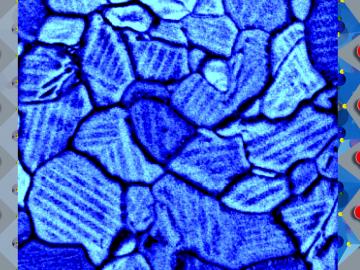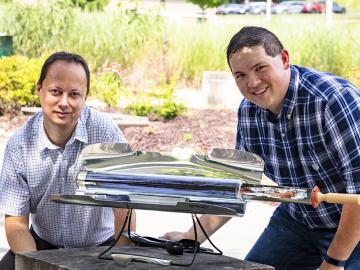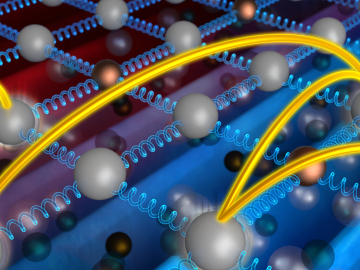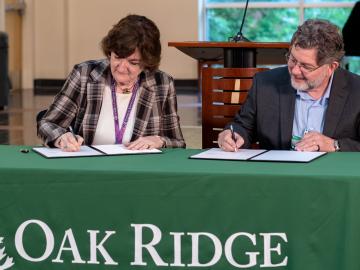
Filter News
Area of Research
- (-) Materials (68)
- (-) Supercomputing (22)
- Advanced Manufacturing (5)
- Biological Systems (5)
- Biology and Environment (4)
- Building Technologies (2)
- Chemistry and Physics at Interfaces (4)
- Clean Energy (73)
- Climate and Environmental Systems (1)
- Computational Biology (1)
- Energy Frontier Research Centers (6)
- Fossil Energy (1)
- Fuel Cycle Science and Technology (1)
- Functional Materials for Energy (4)
- Geographic Information Science and Technology (1)
- Isotope Development and Production (1)
- Materials Synthesis from Atoms to Systems (3)
- Materials Under Extremes (4)
- National Security (1)
- Neutron Science (19)
- Nuclear Science and Technology (12)
- Nuclear Systems Modeling, Simulation and Validation (1)
- Quantum Condensed Matter (1)
- Reactor Technology (1)
- Renewable Energy (1)
- Sensors and Controls (2)
- Transportation Systems (3)
News Type
News Topics
Media Contacts

A unique combination of imaging tools and atomic-level simulations has allowed a team led by the Department of Energy’s Oak Ridge National Laboratory to solve a longstanding debate about the properties of a promising material that can harvest energy from light. Th...

Chemists at the Department of Energy’s Oak Ridge National Laboratory have demonstrated a practical, energy-efficient method of capturing carbon dioxide (CO2) directly from air. They report their findings in Nature Energy. If deployed at large scale and coupled to geo...

Scientists at the Department of Energy’s Oak Ridge National Laboratory induced a two-dimensional material to cannibalize itself for atomic “building blocks” from which stable structures formed. The findings, reported in Nature Communications, provide insights that ...

Sergei Kalinin of the Department of Energy’s Oak Ridge National Laboratory knows that seeing something is not the same as understanding it. As director of ORNL’s Institute for Functional Imaging of Materials, he convenes experts in microscopy and computing to gain scientific insigh...

The materials inside a fusion reactor must withstand one of the most extreme environments in science, with temperatures in the thousands of degrees Celsius and a constant bombardment of neutron radiation and deuterium and tritium, isotopes of hydrogen, from the volatile plasma at th...


The US Department of Energy’s Oak Ridge National Laboratory is once again officially home to the fastest supercomputer in the world, according to the TOP500 List, a semiannual ranking of the world’s fastest computing systems.

StealthCo, Inc., an Oak Ridge, Tenn.-based firm doing business as Stealth Mark, has exclusively licensed an invisible micro-taggant from the Department of Energy’s Oak Ridge National Laboratory. The anticounterfeiting technology features a novel materials coding system that uses an infrared marker for identification.


In an effort to reduce errors in the analyses of diagnostic images by health professionals, a team of researchers from the Department of Energy’s Oak Ridge National Laboratory has improved understanding of the cognitive processes


